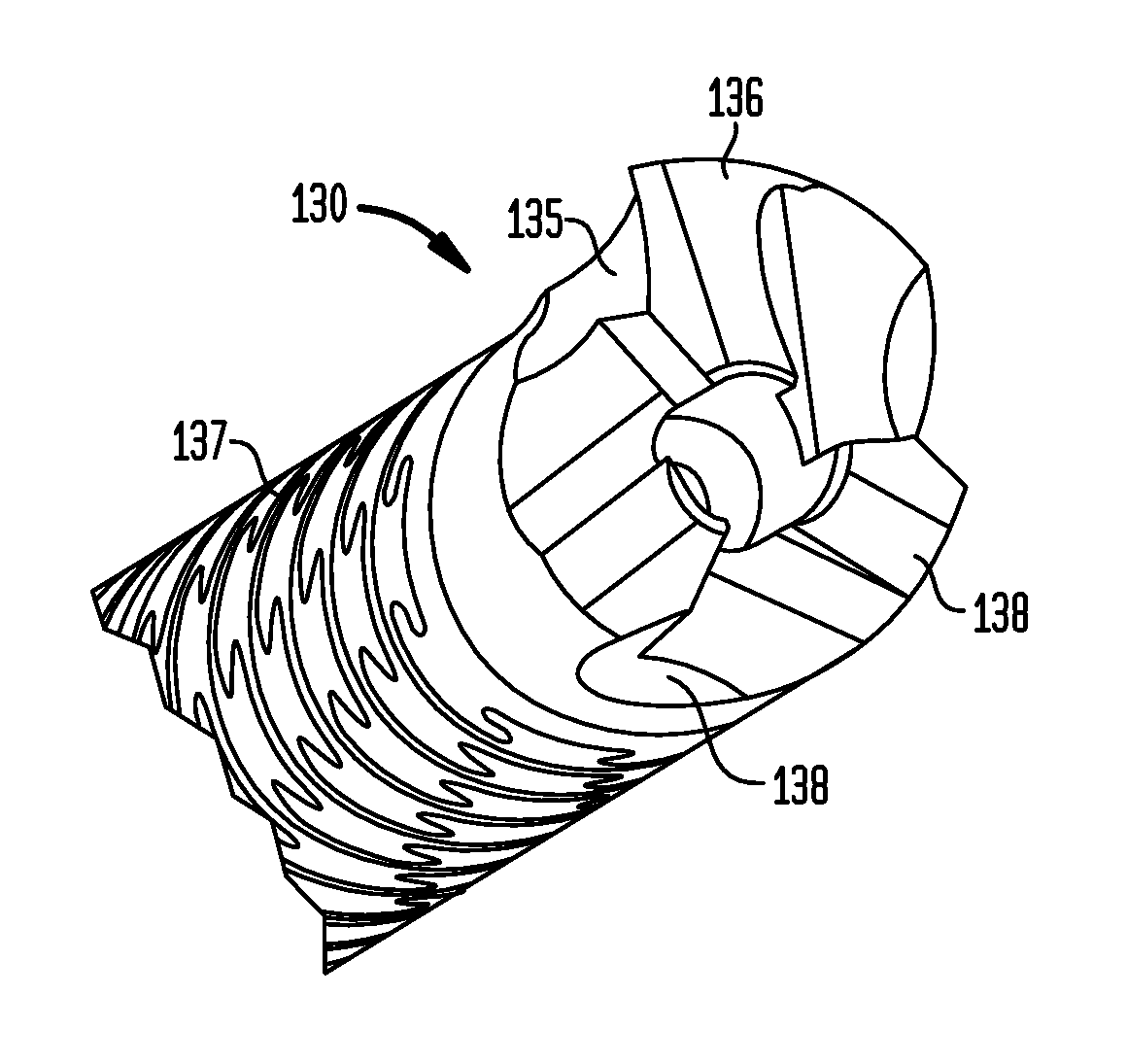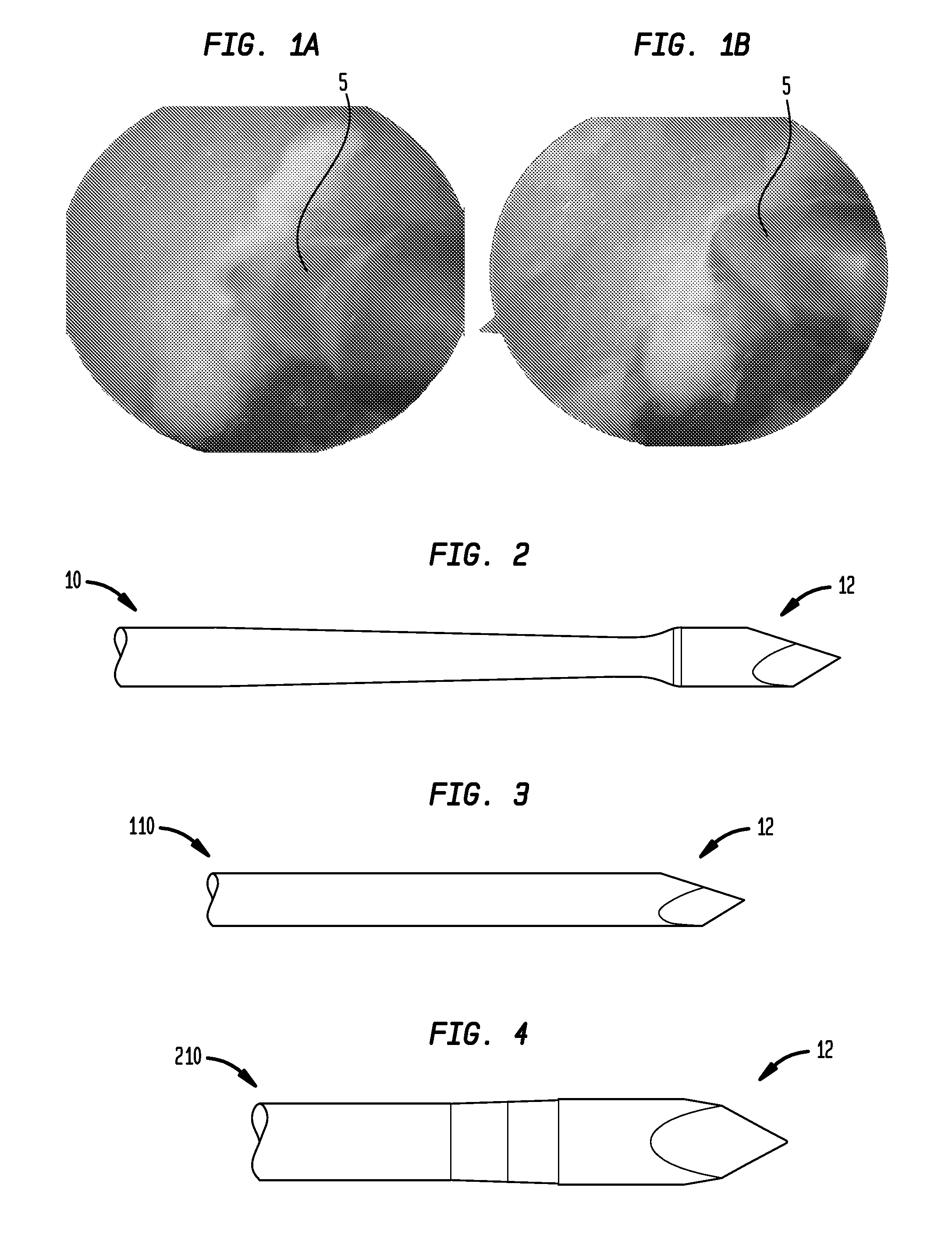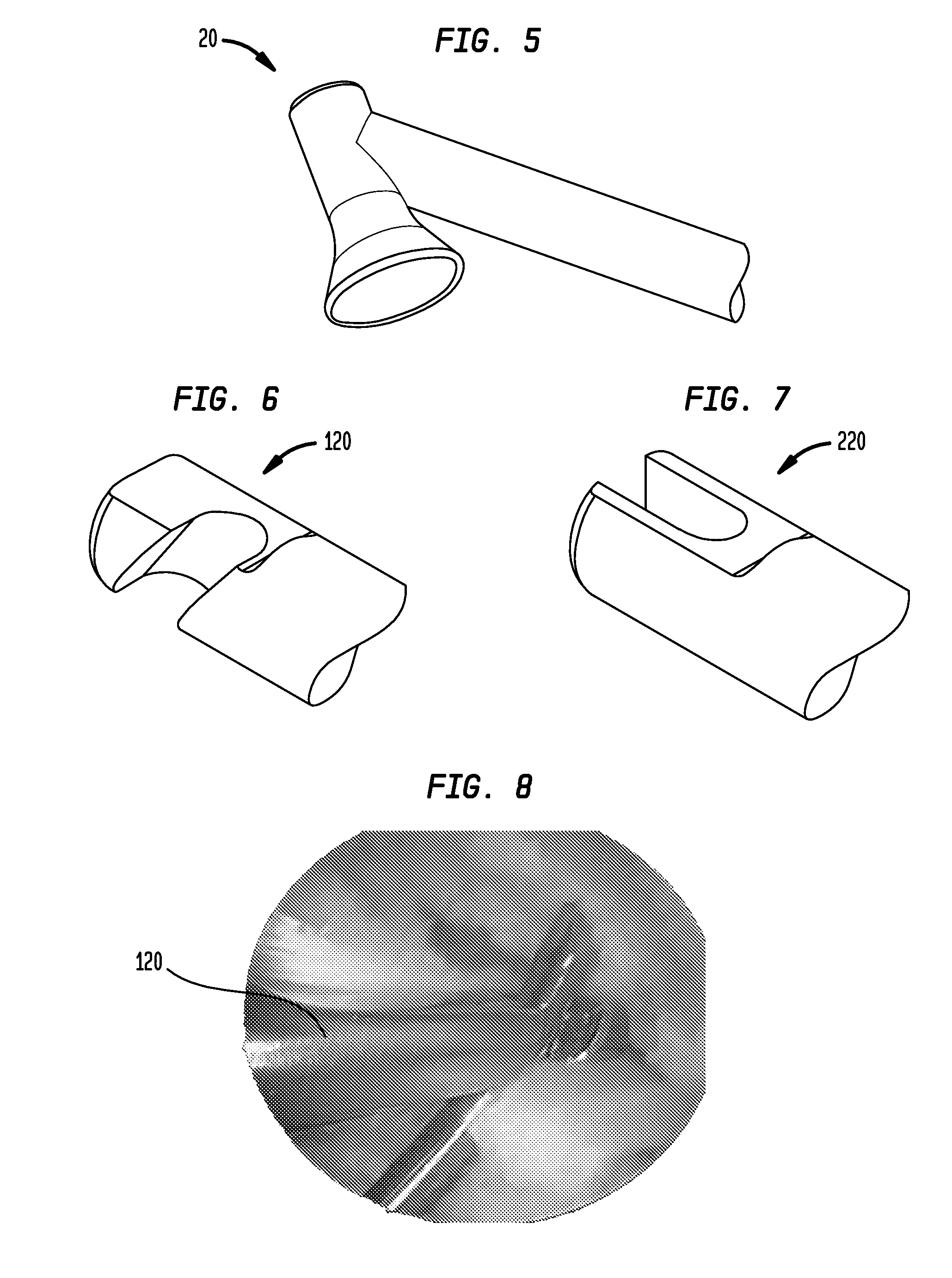Flexible acl instrumentation, kit and method
a technology of flexible acl and kit, applied in the field of flexible acl and anterior cruciate ligament, can solve the problems of reduced rotational stability of acl replacement, difficult to hyperflex, and inability to allow surgeons to position guide pins
- Summary
- Abstract
- Description
- Claims
- Application Information
AI Technical Summary
Benefits of technology
Problems solved by technology
Method used
Image
Examples
Embodiment Construction
[0062]While the following instrumentation and surgical methods may be used to repair any suitable type of soft tissue—such as ligaments and tendons in a knee, hip, ankle, foot, shoulder, elbow, wrist, hand, spine, or any other area of anatomy—arthroscopic repairs of an ACL in a knee joint will be the exemplary focus of the disclosure below. In most of the below embodiments, the present invention forms a tibial bone tunnel and a femoral bone tunnel, each of which engages one end of an ACL replacement graft. The bone tunnels are intended to be positioned substantially at the location of the native ACL connection sites, though other locations may be used as desired or required based on the specific circumstances of a particular patient.
[0063]In a first embodiment, the instrumentation system may optionally include a starter awl 5 configured to create a pilot divot on the bone which will designate an anatomic insertion point. The awl, as illustrated in FIGS. 1A-B, may form a divot within...
PUM
 Login to View More
Login to View More Abstract
Description
Claims
Application Information
 Login to View More
Login to View More - R&D
- Intellectual Property
- Life Sciences
- Materials
- Tech Scout
- Unparalleled Data Quality
- Higher Quality Content
- 60% Fewer Hallucinations
Browse by: Latest US Patents, China's latest patents, Technical Efficacy Thesaurus, Application Domain, Technology Topic, Popular Technical Reports.
© 2025 PatSnap. All rights reserved.Legal|Privacy policy|Modern Slavery Act Transparency Statement|Sitemap|About US| Contact US: help@patsnap.com



